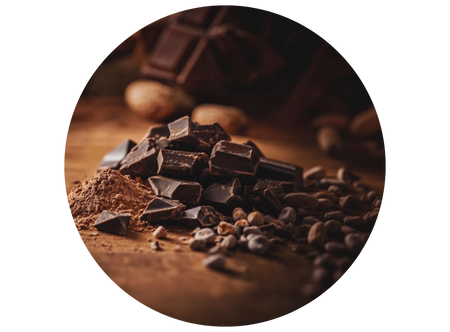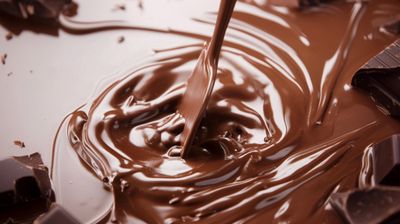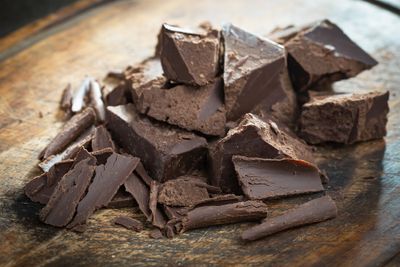Bean to Bar
Explore the intricate process of chocolate making, from sourcing ethically traded cocoa to the meticulous craftsmanship that transforms it into a delectable treat.

Chocolate used to be just a candy, but now people see it as something special. With meticulous attention to detail from sourcing to crafting, the bean-to-bar movement has redefined how we experience chocolate.
» Explore our handcrafted bean-to-bar chocolate and savor every bite
Understanding the basics of chocolate
While often interchangeable, 'chocolate' and 'cocoa' have distinct meanings.
Cocoa refers to the processed products derived from the cacao bean, including cocoa powder (ground roasted beans with most fat removed) and cocoa butter (extracted fat).
Chocolate, the final product, typically combines cocoa solids, cocoa butter, and sugar, often with milk. Large companies mass-produced commercial chocolate, frequently using lower-quality beans and standardized processes to achieve a consistent, usually sweeter taste.
Bean-to-bar chocolate represents a different approach entirely—one where makers control the entire process, from raw cacao beans to finished bars, ensuring quality and preserving beneficial compounds.
» Find out more about how traditional chocolate is made
What makes bean-to-bar unique?
Its commitment to quality and authenticity throughout the production process truly sets bean-to-bar chocolate apart. This approach yields distinctive characteristics:
- Flavor complexity: The authentic cacao flavors shine through without excessive additives, ranging from fruity and floral to nutty and earthy notes.
- Texture: Careful grinding and tempering create a smooth, luxurious mouthfeel that mass-produced chocolate can't match.
- Transparency: Makers often provide detailed information about bean origin, roasting methods, and ingredients, helping consumers make informed choices.
The sacred cacao bean
The flavor of bean-to-bar chocolate is deeply influenced by the cacao bean's origin and the specific harvest, similar to the unique profiles of wine vintages.
Here's what makes cacao beans unique in bean-to-bar production:
- Criollo: Considered the finest and rarest beans, Crillo have delicate flavors with a touch of sweetness and very little bitterness. As they're hard to grow, they're more expensive.
- Forastero: The most common variety, these beans provide robust, classic chocolate flavors and are known for their consistency and hardiness.
- Trinitario: A hybrid of Criollo and Forastero, Trinitario combines the best of both worlds—fine flavor and reliable growing characteristics. It's increasingly popular in the bean-to-bar movement.
With their unique processes, chocolate makers further accentuate these flavors, making each batch distinct. It's not just about the type of bean but the origin, farm, and unique taste notes.
» Explore the antioxidants in cacao that make it so healthy
The process from bean to bar
The journey from cacao pod to chocolate bar is meticulous and time-consuming:
- Harvest and fermentation: Ripe pods are harvested by hand and split open, and the beans undergo careful fermentation for 5–7 days, developing crucial flavor precursors.
- Drying and selection: Beans are sun-dried for several days and then carefully sorted to ensure only the highest-quality specimens are used.
- Roasting and grinding: Beans are roasted to develop flavors and then ground into a smooth paste. Unlike industrial producers, bean-to-bar makers often roast in small batches and adjust temperatures to highlight specific flavor notes.
» Learn why dates are the superior sweetener for chocolate
Health benefits of bean-to-bar
Modern research has revealed numerous potential health benefits in properly processed cacao. Some of these include:
- Antioxidant content: High-quality dark chocolate contains more antioxidants than many superfoods, including blueberries and acai berries.
- Mood enhancement: Cacao compounds can boost serotonin levels and contain small amounts of caffeine and theobromine for gentle energy.
- Heart health: The flavanols in cacao may help improve blood flow and lower blood pressure when consumed as part of a balanced diet.
» Learn more about the health benefits of cacao
Sustainability and social impact
The bean-to-bar movement has become a leader in sustainable chocolate production:
- Fair Trade Practices: Many makers work directly with farmers, paying premium prices that support sustainable farming practices and improved living conditions.
- Environmental Consideration: Small-batch production often has a lower environmental impact, and many makers use eco-friendly packaging and renewable energy.
- Preservation of Diversity: By working with rare cacao varieties and supporting traditional farming methods, bean-to-bar makers help preserve genetic diversity and cultural heritage.
» Discover the benefits of indulging in ceremonial cacao
The art of crafting chocolate at KAICAO
Chocolate making is a return to tradition in an age of mass production. At KAICAO, we believe that slowing down and appreciating the complexity of chocolate making isn't just about creating better flavors. It's about fostering connections between the farmers who grow our beans, the artisans who craft our bars, and the chocolate lovers who savor every bite.
The bean-to-bar movement represents more than chocolate; it's a revolution in how we think about our food and its impact on the world. When you unwrap a KAICAO bar, you're participating in a sustainable future for chocolate, supporting communities across the globe, and treating yourself to flavors that mass-produced chocolate simply cannot match.
Related products
Latest Bean to Bar Articles




